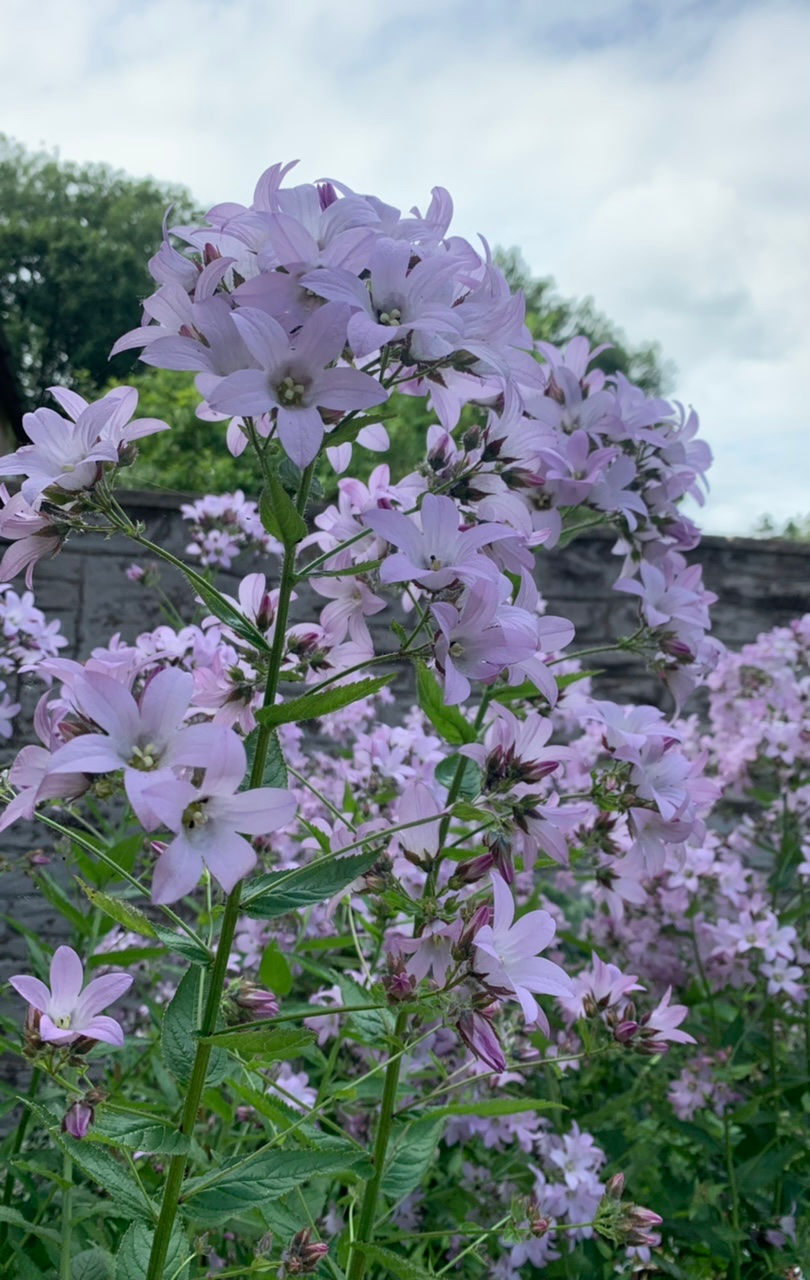Surprise
- Jane
- Jul 6, 2022
- 3 min read

Early July. That time of year again, when even a day away from the garden ensures the classic summer gardener’s responses, ranging from ‘can’t believe how much that has grown’, to ‘wow, that’s finally opened’, to the more despairing lightning lob of bags into the house and subsequent sprint to the hoses and watering cans. I have now been away for several weeks, back in Dubai with Neil to help plan the final packing up and emptying of the house there, and away here in the UK too, with leavers’ events for Sam and festivities for Elliot as his 21st approaches. It doesn’t sound like much time in the context of a twelve month year, but it is always striking how quickly you can feel out of step with a garden. That is nothing to do with the size of this place, though obviously the workload here is significant; there is just a rhythm to the growing year that suggests a pace and an order. This in itself is one of the factors which makes gardening so remarkably therapeutic; I have written before about the impossibility of rushing matters horticultural, and there prevails also that soothing sense of participating in an age-old practice. When that tempo is broken, it is hard to suppress the sense of panic that rears up, the anxiety that the web is broken between you and this vast mass of teeming life.

Reading the weather forecast while you are away from your patch is further fuel for the sparks of stress, but unless you have external assistance or a very good irrigation system, utterly futile. You are probably condemning seedlings and young plants to a parched death if you haven’t planned for watering help, and established beds should - in an ideal world - be planted to withstand extended dry periods. That compulsion still sneaks in, though, just to have a little look at the Met Office, or at the icon staring at you on your phone - has it rained? Is it sunny and dry, or just overcast and dry? How strong is the wind speed, on this almost permanently windy hilltop? As if there is the remotest chance of my willing any soft summer downpours to Herefordshire from four thousand miles away. I wonder sometimes if gardeners in other countries have this same obsession, if this globally renowned (notorious) British obsession with the weather is really down to our readiness from birth for five different meteorological states between breakfast and dinner. I would like to think that if you live near Toulouse, or on the Great Plains, you pretty much know what is in stock from the skies between say, May and September, and you plant accordingly, but these days, who knows.

There was indeed some death and destruction during my absence, annoyingly including the fifteen giant zinnias purchased to gap-fill the hot beds, and also a good handful of my little snapdragons. Where not terminal, lack of water had certainly made things in the raised beds falter - the purple mange touts were looking sorry for themselves, and the Turk’s Turban squash had also faltered. Worst affected on the flower front were the new beds on the east side, which I had probably over fed in May, causing a massive burst of blooming and then predictable exhaustion, so not a rose to be seen and very few buds coming through. I am desperate not to lose the new amelanchiers, nor the ten new roses, so two days of watering ensued with perked up plants soon after.

It was not all doom and gloom. At the bottom of the sloping east beds, the astonishment for me has come from been the campanula (bellflower) variety ‘Loddon Anna’, a semi-shade lover which is now towering in the corner complementing the superstar white butterflies of gillenia trifoliata and the almost iridescent blue-amethyst of penstemon ‘Heavenly Blue” and phlox ‘Blue Paradise’.

Also exceeding all expectations is the catmint ribbon. I’d like to think that someone like Arcade Fire or the Lumineers would have a song called Catmint Ribbon, but until I hear it, the narrow (thus the term ribbon border) 20 metre long anti root-membraned border which separates the lime tree and its galumphing roots from our house is now simply home to a torrent of blue flowers courtesy of the (supposedly) smaller variety of nepeta (catmint) called ‘Walker’s Low’. Elliot and Sam planted this last year, carefully observing my strictures about distancing between the catmints and the grasses interplanted between them. Currently, it is a whole lot more catmint than miscanthus, but the grass will come into its own in late summer/autumn when the nepeta dies down and the grasses’ long flower plumes begin to shoot up. This is the plan, at least.




Comments